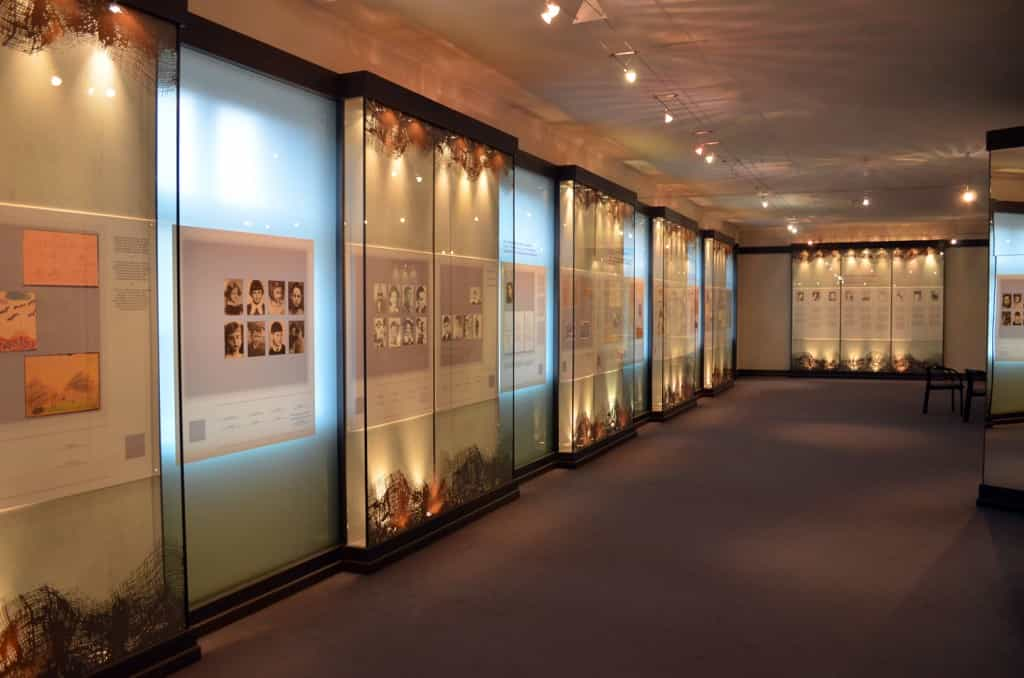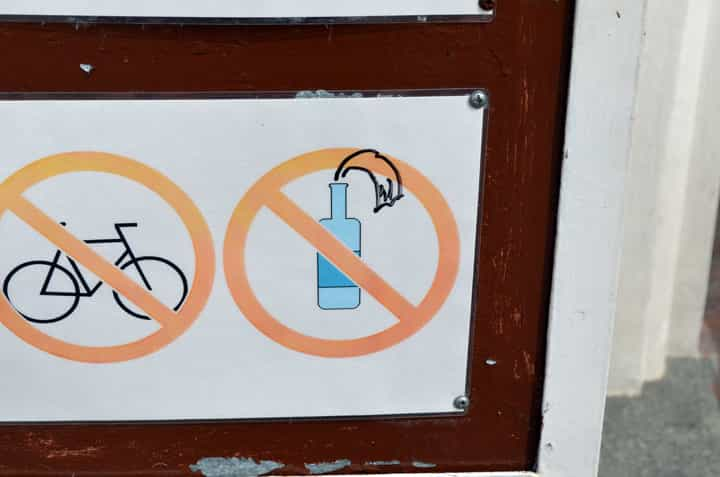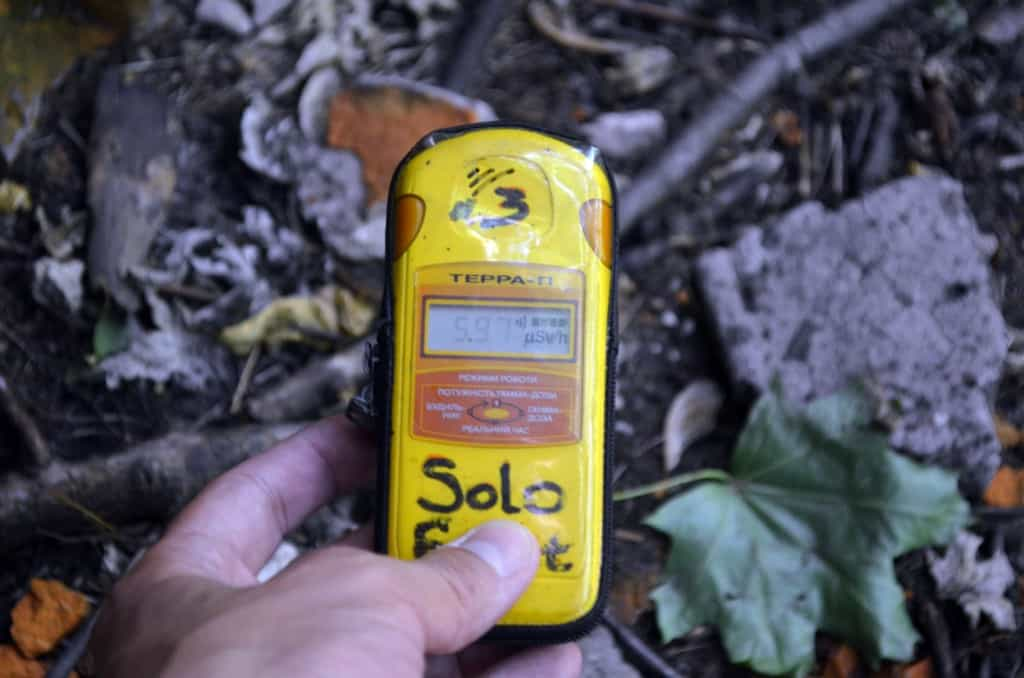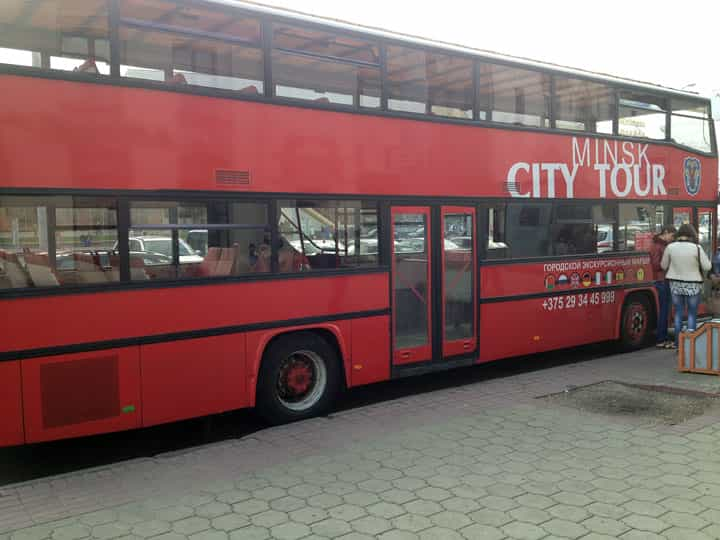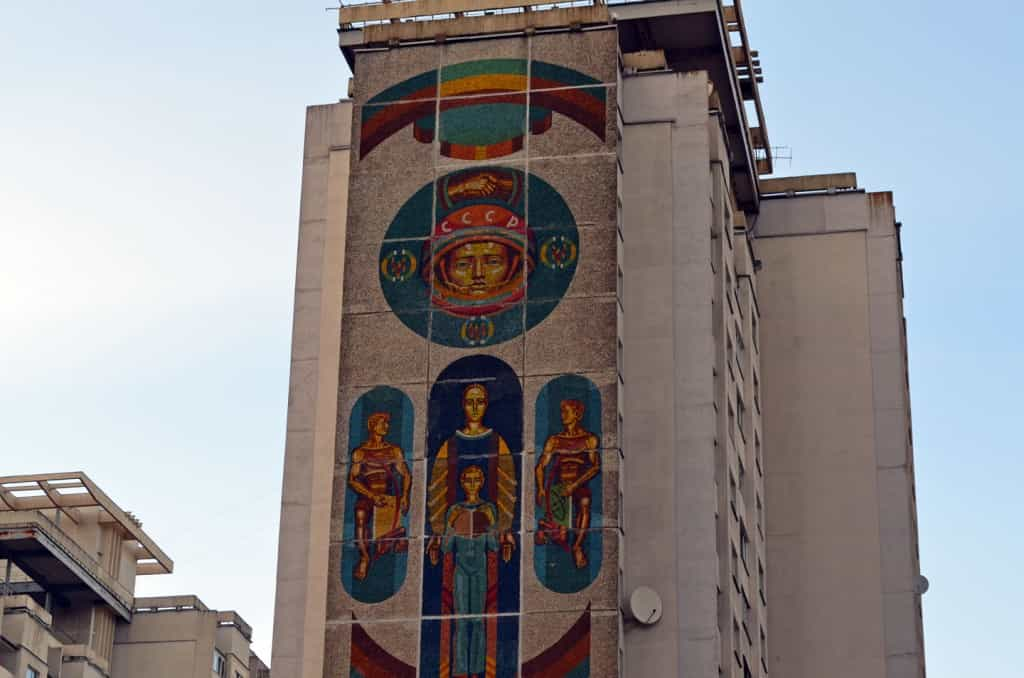Before saying anything about Latvia, I have to mention a certain milestone, one for which I was delighted to have my girlfriend Michelle join me in Europe to celebrate.
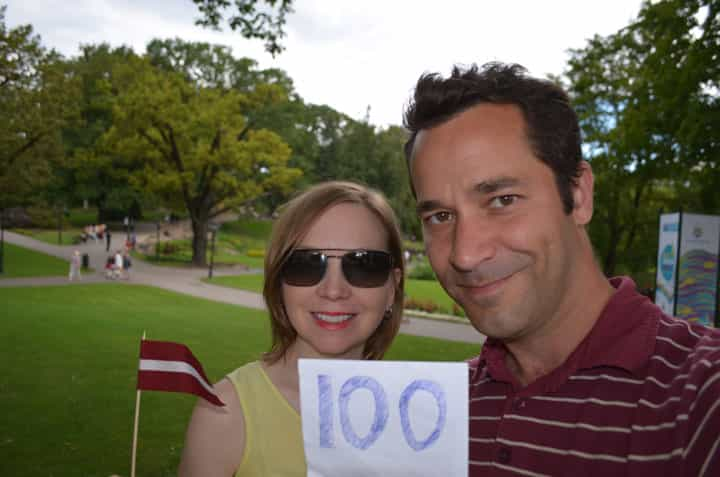
Latvia was the 100th country I visited. Notice my “Latvian flag shirt”!
Now, we saw a lot of fun and interesting things in Riga, but first I want to write about the “serious things”. We visited the Museum of the Occupation of Latvia, detailing the 1939-1989 occupation of the country by Germany and then the USSR. We also visited the former KGB headquarters, opened for a temporary exhibit, which the organizers are trying to make permanent. The building itself is very nice, designed by architect Aleksandrs Vanags, who designed more than 80 major buildings in Riga. Ironically, when the Soviet Union first invaded the country in 1919, he was accused of being a “counter-revolutionary” and executed without trial by the KGB, but they still liked the building! So between the two museums, that made for a lot of 20th century horrors, and since the recent history of Latvia is very similar to that of the other Baltic countries (and to some extent Finland), I will skip 95% of it. But I will mention a few things that stood out for me.

Movies were shown in the old KGB headquarters in which former detainees testified about their ordeal. This man spoke of a young KGB Officer who would take him from the detention cell to the interrogation room. Detainees were kept in abject conditions; packed naked by the dozens in small rooms. Along the way, he would stop in the staircase, between two floors, open the window and say: “Breathe some fresh air, you’ll feel better”. Sometimes he would share a sandwich with him and if he heard someone approaching, he would push him against the wall and scream insults at him, to make sure they didn’t get caught. I was not surprised at all that such a guard existed. No matter which institution of horror you chose, you will always find in them a handful of fundamentally decent men, who ended up there because of ignorance, despair, coercion, poverty, wanting to make their father proud, etc. What touched me is that this victim of torture, in an interview decades later, chose to take a moment to remember and honour the brave young KGB Lieutenant.
The second thing is a historical fact with major consequences for many of Latvia’s resident today. To solidify their control over the country, the Soviets deported many of the educated people to Siberia and moved 700-800 thousand Russians into the territory. I have no idea why the Soviets felt a need to do this, since in the free an fair elections of July 14th 1940, the Latvian Working People’s Block got 97.6% of the votes. But anyway, Latvia was by far the country where this was done on the largest scale. So much so, that in 1989, Latvians were almost a minority in their own country (52%). When the country regained its independence, this was perceived by politicians as an existential threat, and they passed a law denying citizenship to people who had migrated to the country after Germany’s retreat, in 1941. So today, most of Latvia’s large Russian minority are not citizens of any country! They have Latvian passports identifying them as “Non-citizen residents”. Practically, that means they do not have the right to vote or run for office, cannot own land (but buildings yes), and cannot occupy positions that would normally require citizenship in most countries, such as the police and various Government jobs. In daily life, I don’t think that affects most of them, but it is a highly unusual human rights situation in a EU member country. I certainly understand the Latvian Government’s concerns, but to limit the rights of an 18 year old boy because Soviet policies pushed his grandfather to move to Riga in 1946 certainly doesn’t seem very fair.
And the final thing I will mention has had an impact on Canada. When the German army began retreating towards the end of World War II, many Latvians – especially educated people who remembered the Red Terror of 1919-1920, retreated with them. At some point there were 200,000 Latvians in Germany (out of a population of less than 2 million). Since they no longer had a country to return to after the war, many sought refuge abroad. Between the three of them, Canada, Australia and the USA got the benefit of 52 Latvian writers, 564 physicians, 672 university professors, 766 engineers and 2,827 school teachers!

At the Latvian War Museum, this display mentions the service in the Canadian Armed Forces and Royal Canadian Mounted Police of Latvian immigrants. A similar display illustrates the careers of Latvians in the US military, 200 where 200 of them became Senior Officers, and 2 General Officers. However, proportionally to the size of the countries, more immigrated to Canada (20,000) than to the USA (50,000). Maybe they thought they would miss the snow! Continue reading →



